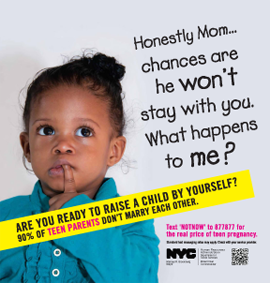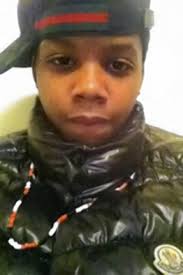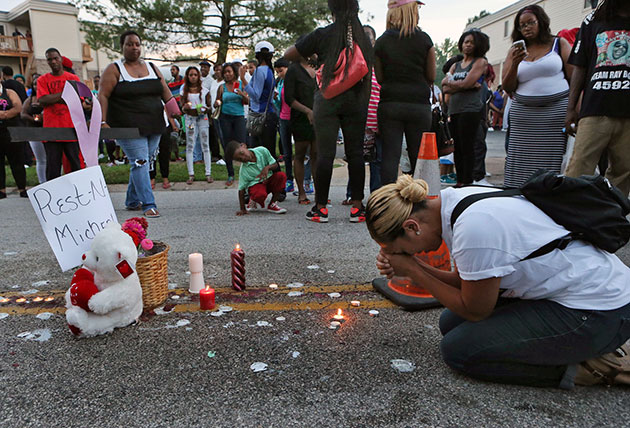The Shapings of Black Masculinities
 The B52 bus picks up passengers on the corner of Gates and Lewis Avenue in the mostly working poor to middle class, black Bedford-Stuyvesant neighborhood of Brooklyn. This particular bus stop, which is a few blocks south of the famed Marcy Projects of Jay-Z’s past, is visited by hordes of black residents of various ages daily.
The B52 bus picks up passengers on the corner of Gates and Lewis Avenue in the mostly working poor to middle class, black Bedford-Stuyvesant neighborhood of Brooklyn. This particular bus stop, which is a few blocks south of the famed Marcy Projects of Jay-Z’s past, is visited by hordes of black residents of various ages daily.
Today, if any of those black commuters take a moment while waiting for the often packed B52 to arrive, they might notice a demeaning billboard plastered on the bus stop beckoning their attention: a poster strategically created by the NYC Human Resources Administration’s (HRA) Department of Social Services which cautions viewers about the “real cost of teen pregnancy.” The ad is really teaching them, lecturing us, about the real costs of black female reproduction and evidences government’s desire to police black bodies, black sexuality, black life.
Additionally, this particular ad, which features the face of a beautiful black baby girl, offers a resoundingly clear memorandum on black manhood: that is, black teen men won’t father…black men aren’t committal…black men exit the lives of their children…and, frankly, black men ain’t shit.
According to the HRA’s website, “The campaign will be on display on subways and bus shelters citywide, and will also feature an interactive texting program and a video” for the purposes of illuminating “the high costs teen pregnancy can have for both teen parents and their children.”
The $400,000 HRA initiative has rightly been criticized by Planned Parenthood of New York City and others for its failures to attend to the various factors that may impact teen pregnancy rates, namely, “poverty, violence, limited access to health care, as well as gender, racial and ethnic inequalities.” To be sure, the ads are reprehensible.
In another mostly black neighborhood of Brooklyn, East Flatbush, which is not too far from Bed-Stuy, 16-year old Kimani Gray was shot and killed by NYPD on Saturday, March 9th. The New York Times reports the officers got out of the car to question Kimani after police claimed that they noticed the teenager adjusting his waistband in a “suspicious manner” and “pointed a .38-caliber Rohm revolver at them,” which subsequently resulted in the police shooting Kimani to his death. Witnesses, however, contend that the story as told by the police exaggerates, if not wholly misrepresents, the truth.
Kimani’s death at the hands of the NYPD must be considered alongside the other shooting deaths of black men including 18-year old Ramarley Graham, who was one of three black males killed by NYPD in early February 2013 according to Colorlines.com. The shootings, at the hands of city police, echoes loudly the very point that the HRA ads suggests, namely, the belief that black life—black male life—is insignificant, and, therefore, expendable.
But the marred bodies of black boys and men who’ve been hit by police officers’ guns are more than representations of precarity. They are targets of the myriad projectiles aimed in the direction of black life. And no matter the class of the black man, his age, his neighborhood, his sexuality, his swag, his swish, or lot, “bullets” will surely fly his way in NYC.
Space shapes.
In fact, masculinities, including black masculinities, are performed partially in response to the various external conditions present within the geographical spaces, like NYC, where they emerge. In other words, masculinities are shaped by skewed conceptions of gender, a sexist culture, and the range of structural conditions that impact black men quite negatively.
Consider, for instance, what type of black masculinity might emerge in response to a city funded teenage pregnancy prevention ad that pretty much tells black teen females that black boys ain’t shit in a city where police use tax-payer funded guns to shoot its residents? And how can we encourage black boys and men to resist the need to perform power (that hurts), toughness (that victimizes), and swag (that boasts chauvinistically) when, in fact, demonstrations of power, toughness, and swag might be performed by black boys and men to counter state violence? Thus, we should ask how we might re-create masculinities that do no harm and also consider the forces at work that tend to shape black male gender performances in destructive ways.
Black masculinities are created within heteropatriarchy and tend to be overdetermined by misogyny, sexism, violence, and rape culture. It is our responsibility as black cis and transgendered men to name and disengage caustic masculinities, but we should also consider why black men would fight so damn hard to perform the “strong black man” caricature in various spaces in the US, like NYC. Indeed, we black men must consider how our senses of self and the masculinities we perform are shaped by the conditions present within the spaces that we move through.
Whether we encounter dehumanizing messages when reading an HRA teen pregnancy ad while awaiting a bus in Bed-Stuy or face down the barrel of a gun in the hand of a NYPD officer’s hand while hanging with friends in East Flatbush like young Kimani Gray, our masculinities emerge in response to the myriad forces we encounter in the spaces in which we exist. The project of recuperating a range of black masculinities that do no violence to women, kids, and other men, then, requires that we name and resist patriarchy, sexism, misogyny and other violences while simultaneously thinking through the ways in which black masculinities also emerge in response to the very real possibilities of violence inflicted upon cis and trans-gendered black boys and men.



60 Comments